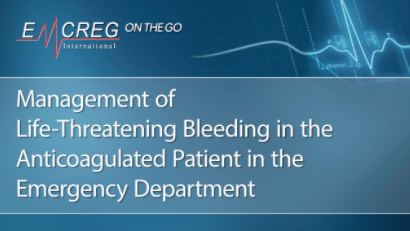Should You Ever Wait to Treat Intracranial Hemorrhage in the Anticoagulated Patient?
/As the utilization of direct oral anticoagulants (DOACs) increases, there is a parallel increase in major bleeding events, especially intracranial hemorrhages, requiring hospitalization. Clinicians are not recognizing or distinguishing major from minor bleeding, or appropriately employing emergent options to manage major bleeding. Recent solutions for DOAC related life-threatening bleeding are under-recognized and under-utilized solutions for patients with these life-threatening emergencies.
Read More










